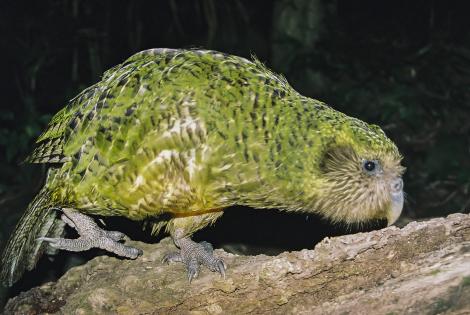4 June 2014
The sad tale of Maggie the Kakapo, the victim of a landslide
Posted by Dave Petley
Maggie the Kakapo
The Kakapo, according to Wikipedia is a “species of large, flightless, nocturnal, ground-dwelling parrot endemic to New Zealand”, which is also known at the Owl Parrot. It has a number of unique characteristics, not least the fact that it is the only flightless parrot. It is a large and attractive bird, as the image (from New Zealand Birds Online) below shows:
.
Whilst once being widespread across the forested areas of New Zealand, the Kakapo was poorly adapted to the changes and threats brought by human occupation, and by the predators that people brought with them. The result is that the Kakapo is critically endangered – in November 2005 there were just 86 individuals left. This has led to extensive efforts to increase the population, and by March of this year numbers had increased to 126.
This number is so small that each bird is known individually (they are all named), and all are tracked using small radio transmitters. Thus, it is with sadness that the managers of the Kakapo Recovery Project have reported that a Kakapo known as Maggie was killed on 20th May on Codfish island. The cause of her demise was a landslide triggered by a period of heavy rainfall. Her body has been recovered from the debris – of course the transmitter meant that she was comparatively easy to find – and of course the telemetry data gives the time of death:
..
At the time of her death Maggie the Kakapo was just 36 (when the life expectancy is over 60 years), so this is a sad loss of an important bird.
The loss of endangered species to landslides is rarely reported – the only other example I can think of was the impact of landslides triggered by the 2008 Wenchuan earthquake on the wild panda population in Sichuan Province in China.
However, in another way such losses can be important. In the last week a major find of marine fossils has been reported in Chile. Its likely that the exceptional preservation of these animals is the result of their burial by a landslide some 250 million years ago.





 Dave Petley is the Vice-Chancellor of the University of Hull in the United Kingdom. His blog provides commentary and analysis of landslide events occurring worldwide, including the landslides themselves, latest research, and conferences and meetings.
Dave Petley is the Vice-Chancellor of the University of Hull in the United Kingdom. His blog provides commentary and analysis of landslide events occurring worldwide, including the landslides themselves, latest research, and conferences and meetings.
I believe one other example was the concern that a rock slide on Ball’s Pyramid impacting the only known population of Dryococelus australis – the “the Lord Howe stick insect.” Luckily, it seems that they were not,as they are extant still today.